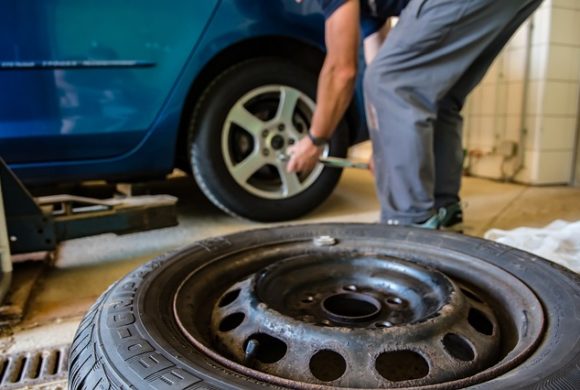
by Queener Law | Jun 18, 2018 | Auto Accident, Colorado, Kentucky, Tennessee
Tesla Crashed While on Autopilot
A recent crash in Utah has raised concerns that drivers may be inattentive when they are using autopilot, failing to react and take control when doing so is needed. When the woman crashed into a stopped firetruck while she was traveling at 60 mph in her Tesla with the autopilot system engaged, her hands had not been on the wheel for about 80 seconds. She was ticketed after telling the police that she was looking at her phone just before the collision.
A 28-year-old Utah woman was driving her Tesla Model S on autopilot, which requires driver oversight. She took her hands off of the wheel to look at her cell phone while she was traveling at 60 mph. While she was looking at her phone, her car crashed into a fire truck that had stopped. She only suffered a broken foot in the collision, and Tesla placed blame on her for her accident. The woman reportedly did not have her hands on the wheel for the 80 seconds that led up to the accident. The crash was not the first one involving a Tesla while it was on autopilot. The National Highway Traffic Safety Administration is currently investigating collisions of Tesla cars in California and Florida.
Problems Revealed by the Crash
The latest car crash occurred amidst the rush of car manufacturers to add driverless technology to their vehicles. Carmakers tout the technology, claiming that it is much safer than human drivers and should lead to a drop in accidents. One issue that was revealed by this accident is that drivers may become complacent when they are driving on autopilot and fail to pay attention to what is happening on the road around them. In the woman’s case, data from her car revealed that she had taken her hands off of the wheel more than 12 times. The woman only placed her hands back on the wheel for a few seconds when the car prompted her to do so on its heads-up display. Tesla does not have the technology to track when motorists are not paying attention like other carmakers do in their autonomous vehicles.

by Queener Law | Jun 17, 2018 | Personal Injury, Tennessee
Jaywalking Laws
Most people think that jaywalking accidents are the fault of the motorist, but under certain situations, the pedestrian may be partially or totally at fault. Liability in jaywalking accidents depends on proof of fault. According to law, jaywalking violates pedestrian traffic laws set by each state. While it’s a low-level offense, most jurisdictions impose fines to violators. Jaywalking laws cover a variety of pedestrian behaviors, and they can vary from state to state. In some cases, jaywalking laws enacted by local jurisdictions are more stringent than state laws.
Jaywalking laws in all states require pedestrians to obey traffic control signs and signals. In general, traffic laws require pedestrians to yield to motorists outside a crosswalk to avoid the risk of being hit by a car. A personal injury attorney commonly sees serious injuries and fatalities caused by jaywalking accidents. Under Tennessee pedestrian laws, pedestrians have the right of way at all intersections and driveways, but they must obey traffic signals when available. In Tennessee, pedestrians have a duty of care for their own safety. They must yield the right of way to all moving motorists on the road. They must look both ways and exercise safe behavior when crossing the road at any point other than in a marked crosswalk or at an intersection. On roadways without sidewalks, pedestrians must walk facing oncoming traffic.
Determining Fault for Jaywalking Accidents
Tennessee traffic laws are enacted to protect both drivers and pedestrians. Drivers must yield to pedestrians crossing the street in crosswalks and school zones. They must come to a complete stop and wait until pedestrians have safely crossed. Drivers are expected to do everything possible to avoid hitting pedestrians, even if they are illegally jaywalking. Pedestrians are also required to obey traffic laws. Pedestrians who ignore traffic signs and signals put drivers and themselves at risk. A Tennessee personal injury attorney often sees pedestrian injuries that range from broken bones to death. When dealing with car accidents, Tennessee is a “fault” state. Generally, motorists have the right of way on the road and pedestrians have the right of way in crosswalks. If a pedestrian jaywalks and gets hit by a motorist, the pedestrian may be found at fault for the accident. If the motorist is under the influence of alcohol or drugs, he/she will likely be found liable, even if the pedestrian is jaywalking.

by Queener Law | Jun 11, 2018 | Auto Accident, Tennessee
Police Fail to Find Teen
A tragic incident involving a teen that died after calling 911 while trapped in his van highlights problems with emergency response centers nationwide, including in Tennessee. The center and others like it have been plagued with inadequate staffing, training issues, and outdated technology for years, and the failure to take prompt action could result in catastrophic consequences for injured or ill victims.
According to reports, 16-year-old Kyle Plush was asphyxiated by a seat in his Honda Odyssey when he became trapped while reaching for his tennis equipment. The Ohio teen was scheduled to practice tennis and was parked outside his high school. He reached to retrieve his equipment when the seat flipped over and trapped him. Since his phone was in his pocket, Kyle used voice commands and Siri to call 911. An internal investigation revealed several problems that were highlighted by the Cincinnati City Council. The automated response overrode the teen’s initial comments, he was unable to respond to questions from the dispatcher, and the first call was disconnected. He called a second time and provided vehicle description information, but his comments, and the fact that someone was heard banging and yelling was heard, were not communicated to police. Additionally, information that was available was not adequately utilized to locate Kyle. The teen’s father found him dead inside the van nearly six hours after the initial 911 call. The Cincinnati City Council is now working to improve its emergency response center after admitting that multiple errors were made in response to the boy’s two 911 calls. The city and Honda may both be liable for the accident.
Problems With Emergency Response Systems
Problems with staffing, operations, outdated technology and inadequate training plague emergency response systems throughout the nation. These issues can result in extensive wait times for people to get help, miscommunication, disconnected calls, the inability of responders to locate callers, inappropriate responses to true emergencies, and more. As 911 calls from cellular phones become more common, problems within emergency systems are only getting worse. When every second counts, cities, counties, manufacturers, and others can be held liable for technological errors, negligence in hiring, training and supervising workers, communication problems, and equipment failures.

by Queener Law | Jun 7, 2018 | Auto Accident, Tennessee
Why Are Teen Accidents Increasing?
Teen driving fatalities have been increasing in Tennessee and in the rest of the country, making it important for parents to teach their teens to drive safely. Teaching safe driving practices may help to save the lives of teens as well as those of others who are on the roads around them. Teen drivers have less experience than older drivers and are likelier to engage in risky behaviors. The widespread use of cell phones and apps has also contributed to the increase in accidents. There are several things that parents should keep in mind when they are teaching their teens to drive.
Teen driving fatalities steadily declined from the middle part of the 1970s until about four years ago. Since that time, the number of teen driving fatalities has been increasing. Almost 3,000 teens are killed in motor vehicle accidents every year. One of the major contributing factors to the increase in teen driving fatalities is the use of cell phones and other electronic devices while the teens are driving. Using a cell phone while driving to text, talk, check social media, or use apps diverts the attention of teens away from the road. While their eyes are off of the road, the vehicles that they are driving can travel hundreds of feet. Since they are inexperienced drivers, they may not react the correct way to avoid collisions. Other issues that have contributed to the increase in accidents include driving while drunk, speeding, not wearing seatbelts, driving while they are drowsy, and driving with passengers in their vehicles.
Teaching Teens to Drive Safely
Parents can help to prevent their teens from being involved in an accident by teaching them to drive safely at all times. It is a good idea for them to enroll their children in drivers’ education courses. Once they have completed these classes, the parents should regularly take them to practice driving. Parents should view the state’s required supervised driving hours as a minimum amount and should aim to teach them more. They should also model safe driving practices themselves by always wearing seat belts, following speed limits, and not checking their cell phones while they drive. Teaching teens to drive safely may save their lives and those of others.

by Queener Law | May 16, 2018 | Tennessee, Trucking Accident
The move to autonomous trucks may place added stress on Tennessee truck drivers and lead to new dangers from fatigue, disengagement and the potential for cyber terrorism. While manufacturers tout the safety of autonomous vehicles, their advent has led to questions about liability and concerns about the reaction times of drivers when they are forced to take control of the trucks in emergency situations. The Federal Motor Carrier Safety Administration recently conducted a listening session to talk about some of the potential issues that could happen when large trucks are traveling on the roadways. The agency is trying to determine what type of regulations might be in order for autonomous trucks.
Potential Dangers of Autonomous Trucks
According to Mark Rosekind, the former administrator of the National Highway Traffic Safety Administration, truck drivers who are assigned to these trucks may quickly become complacent and experience passive fatigue while they are monitoring autonomous systems and are not in control of the trucks. Among the major accidents investigated by the National Transportation Safety Board in the last few years, 20 percent were caused by fatigue.
A researcher from the Institute for Simulation and Training at the University of Central Florida conducted a study of drivers in vehicles with level 3 automation, which is when vehicles are in full automation mode but drivers are expected to remain in the vehicles and take over in the case of an emergency. The researcher found that the drivers became disengaged and exhibited passive fatigue starting about 10 minutes after they began operating the vehicles in autonomous mode. When the researcher presented a simulated emergency situation of another vehicle pulling out into traffic ahead of the vehicles, he found that the drivers’ reaction times were much slower. Passive fatigue caused slower reaction times than active fatigue.
Other concerns include the potential for attacks on interconnected systems by cyber terrorists. If cyber terrorists are able to hack into the systems that control autonomous trucks, they could wreak havoc and cause the loss of many lives in large truck accidents. There are also concerns about liability in accidents that might be caused by autonomous trucks. The FMCSA is considering ways to regulate autonomous trucks to make them safer for everyone.

by Queener Law | May 8, 2018 | Auto Accident, Tennessee
In Tennessee, some accidents are caused by tires separating from vehicles on the highways that then crash into other cars. While these types of accidents are rare, some motorists are seriously injured or killed when their vehicles are struck by flying tires. Tires may separate from vehicles because their lug nuts have not been tightened enough by tire mechanics when they change the tires on the vehicle. They may also separate when the mechanics apply too much torque when they are replacing the tires, weakening the lug nuts and causing them to fail.
Dangers of Tire Separations
When tires fall off of vehicles while they are traveling on the highways, they may fly through the air and collide into other vehicles. These car accidents are sometimes deadly. In a recent case in Nevada, two cousins were killed when a tire separated from an SUV that was traveling in the opposite direction on Interstate 95. The tire crashed through the windshield of the vehicle in which they were passengers, killing them both. An engineer with MFA Forensics states that there are around 50,000 tire separations each year, and the incidents are underreported. This makes it difficult to determine the pervasiveness of the problem.
What Causes Tires to Separate?
Tires may separate from vehicles because of several maintenance issues. In 643 cases that happened between 2000 and 2003, 65 percent were caused by loose lug nuts, and 26 percent were caused by wheel bearing failures. Nearly all of the cases could have been prevented by proper maintenance. In a Canadian study, 83 percent of the reported wheel separations happened soon after the vehicles’ tires had been serviced.
Tires may separate when their lug nuts are tightened too much or not tightened enough. Mechanics that do not use the proper torque or calibrated tools when they change the tires may cause too much pressure to be applied to the lug nuts, causing them to sheer off while the vehicles are being driven. This may then lead to the tires flying off of the vehicles and striking other motorists who are traveling nearby. The mechanic shops that performed the improper maintenance may be liable to pay damages if people are killed or injured when the tires separate and fly off the vehicles.






